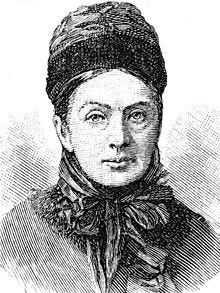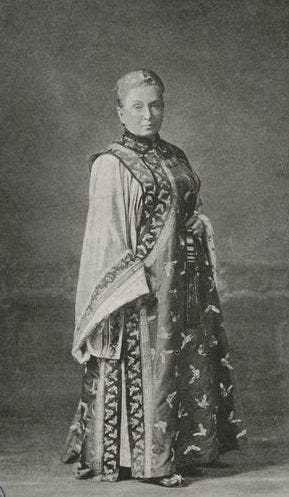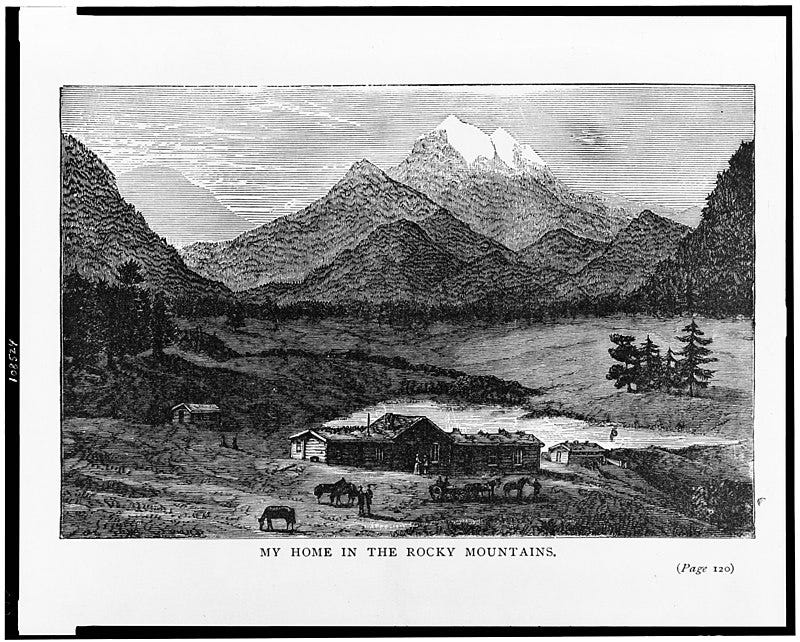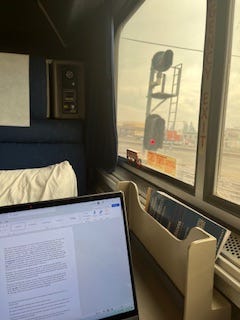Finding Lost Voices: Have you ever heard of Isabella Bird?
A weekly email that brings back the voices of those who have been forgotten or misremembered.
This week, I had the opportunity to travel on board a train from Emeryville, CA (near San Francisco) to Salt Lake City, UT. I’ve always dreamed of following these historic tracks—nearly the same route since the tracks were first laid down and connected in 1869. Charmian Kittredge London, the woman I wrote my first biography about, Charmian Kittredge London: Trailblazer, Author, Adventurer, traveled this same route from the Bay Area to Salt Lake City many times. But today I’m thinking about the lost voice of another woman named, Isabella Bird (October 15, 1831 – October 7, 1904).
Bird was a ground-breaking travel writer who was born in Boroughbridge, Yorkshire. Bird originally sought travel as a cure: in her twenties, after a tumor was removed from her spine, her doctors prescribed a sea voyage as a possible cure. While the voyage didn’t do much for her health (she would suffer chronic pain the rest of her life) the trip did inspire her lifelong passion: travel writing and gave her an outlet to live freely. Bird never liked to follow rules and soon discovered that on the road all the societal constraints and gender norms that structured her life as a Victorian woman fell away. On the road, Bird felt freedom.
On that first solo trip at age twenty-three, she traveled to Prince Edward Island and the United States. The “bright descriptive letters” she wrote home became the basis for her first book An Englishwoman in America (1854). On her second solo trip to Australia, New Zealand, Hawaii, and through the Western United States Bird would write several more books including, The Hawaiian Archipelago: Six months Among the Palm Groves, Coral Reefs, and Volcanoes of the Sandwich Islands. (1875).
In Hawaii Bird climbed volcanic peaks like Mauna Kea and Mauna Loa and learned to ride horses astride (something that was considered revolutionary at the time) which she found greatly relieved the pain she normally felt in her back while she was riding. Bird’s travel writing about Hawaii offered an alternative perspective to the dominant male writers of the time. As scholar Precious McKenzie Stearns wrote, “Bird remarked on missionary work, competing empires, new opportunities for women, and capitalism in the Pacific. Where missionaries saw sin and immorality, Bird found freedom.”
But back to my train ride and why I’m on it. After she left Hawaii, Bird traveled by ship to San Francisco and then boarded a train near where I boarded mine in Emeryville. Bird headed East across the delta and through the Sierra Nevadas, past Salt Lake City on to Denver, CO where she’d continue her journey by coach, horseback, and on foot. Bird would live in Estes Park and become one of the first women to climb Long’s Peak. Bird’s letters to her sister, first published in the magazine The Leisure Hour, would become Bird’s fourth and bestselling work, A Lady’s Life in The Rocky Mountains (1873).
Bird’s vivid descriptions of the flora and fauna she encounters bring this pre-photographed era to life. She describes lush post-goldrush and pre-earthquake San Francisco, the wilderness of the Sierra Foothills, and the dense snowpack of the Sierra Nevada, and introduces us to a rough new lumber town called Truckee. As I sat in my modern train car, it was difficult not to think about what it must have been like for Bird to travel by train in the 1870s. How many looks she must have suffered. And how, it seems, based on her writing, she didn’t care at all what other people thought of her.
“This is a glorious region, and the air and life are intoxicating. I live mainly out of doors and on horseback, wear my threadbare Hawaiian dress, sleep sometimes under the stars on a bed of pine boughs, ride on a Mexican saddle, and hear once more the low music of my Mexican spurs.” A Lady’s Life in The Rocky Mountains
Think of what we could learn about this era if we looked at it through Bird’s unique perspective.
Thank you to all of you who have already signed up for paid subscriptions! Your donations help fund this important research! And don’t forget to join the conversation!






